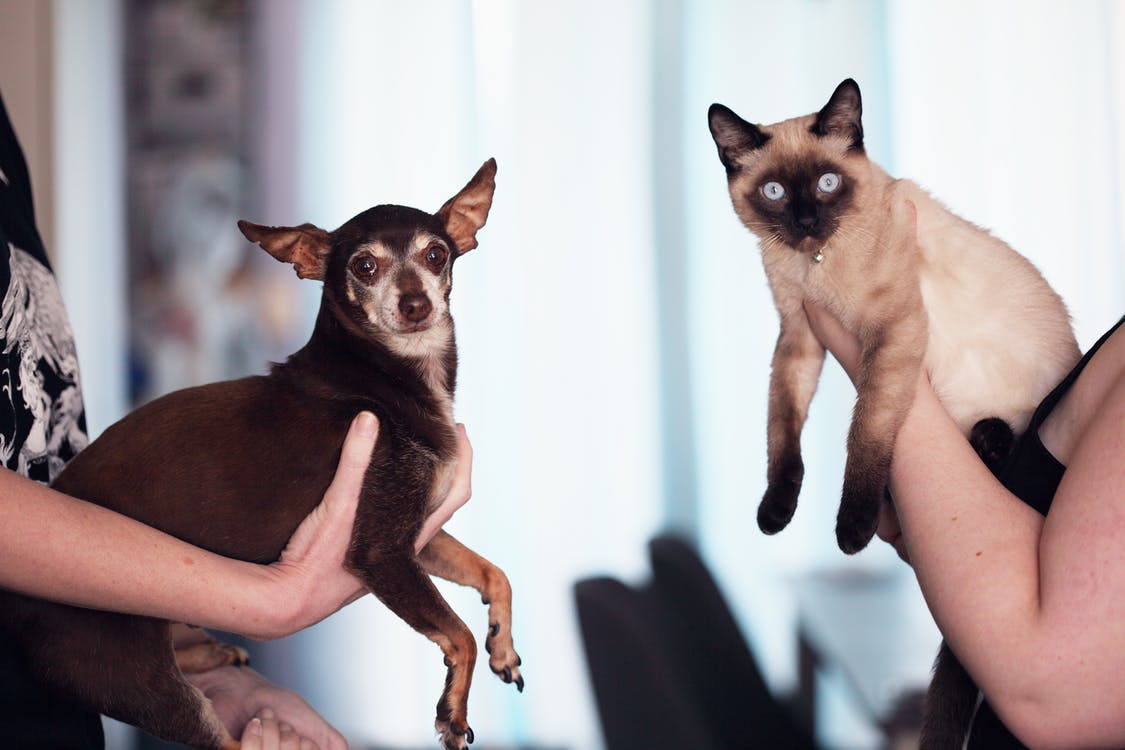How to Help Pets With Anxiety
Anxiety is not just a feeling that occurs in humans, it can be experienced by pets too.
There are many reasons why your pet may be feeling anxious. As an owner, you must be aware of this, and try your best to find ways that help them when they are feeling anxious.
Anxiety in pets can manifest itself in a variety of ways. Unfortunately, pets cannot communicate to you how they are feeling, instead, it is up to you to identify any changes in behavior. If you notice that your pet is participating in anxious and repetitive behavior, such as biting, crying, shaking, chewing household items, getting upset when you leave the room, digging, excessive licking or chewing, not eating, isn't able to settle down, etc. then it might be a sign of anxiety.
Pets have anxiety for many reasons, such as abandonment, abuse, separation, changes, traveling, loud or unexpected noises, strangers, children, and more.
If you think your pet is experiencing anxiety, it is important that you first seek medical help from a vet who will be able to rule out any other conditions and provide tailored advice to help your pet.
In the meantime, there are a few things you can do to help your pet with anxiety.
#1 Be aware of your surroundings
It is important that your pet feels safe at home, or when they are out and about with you. Start to notice what is in your surroundings, and the times your pet feels the most anxious, to see if you can remove or improve the environment to make your pet feel more comfortable. For example, your feline friend may not like certain objects or textures in your home. If you have a dog, it is important to consider where you take them, for example, dogs and fireworks aren't always a good mix, so try to avoid anywhere there could be loud noises, bangs, or events with displays.
#2 Physical Contact
Physical contact, such as sitting on the couch next to your furry friend, or a nice long pet, can be an extremely calming and soothing action for your pet when they are feeling anxious. Try to identify when your pet is beginning to feel anxious, and use physical touch to calm them before it gets worse.
#3 Regular exercise
Exercise is not only a great way to spend quality time with your pet, but it can also be a way to release any pent-up energy caused by anxiety and stress. Exercise is a well-known way to look after your physical and mental wellbeing and is not only beneficial to humans. Most pets enjoy a good run around, so you are encouraging them to have more fun.
#4 Socialization
Socializing your pet can promote a healthier and improved quality of life by increasing confidence as well as learn and reinforce new behaviors. When your pet meets another pet and plays nicely with them, it can make them feel more at ease and lead to a happier pet overall. Without proper socialization, it can negatively impact your pet and lead to more fear, anti-social behavior, and often even aggression.
#5 Music
Music is a fantastic way to calm your pet if it experiences anxiety. Music is often used in a lot of human therapies but can be beneficial to pets too. The right kind of music can spark relaxation for your pet, or drown out loud noises that scare them. Music can be played if they get anxious in the car, while you're at home, or even leave a radio on for your pets when you head off to work.
#6 Anxiety coats and blankets
The great thing about technology is the ability to innovate new and helpful tools for a variety of needs. In this case, there has recently been a surge in calming coats and blankets for pets. These coats and blankets are made from soft materials and are often equipped with a little weight in them, so that they can carefully add pressure to your pet's body, similar to when you swaddle a baby, to help calm them with their anxiety. These are popular for pets who get anxious in the car, or perhaps on fireworks night.
#7 Behavioral training
This type of support is often used for pets who have separation anxiety. In this case, behaviorists work with your pet to help reduce the negative association your pet has when it is left alone from you. This includes gradually increasing the time you are out of the house and using tools such as food puzzle toys to assist.
There are many ways you can help your pet with anxiety. It is important to first identify a behavior change, and work with your pet to find the best solution for them.
839GYLCCC1992




Leave a Reply